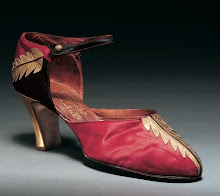Cartier and America covers the history of the House of Cartier from its first great successes as the “king of jewelers and jeweler to kings” during the Belle Epoque through to the 1960s and 1970s, when Cartier supplied celebrities of the day with their jewels and luxury accessories. Derived mainly from the private Cartier Collection housed in Geneva, the spectacular array of more than 300 objects includes jewelry of the Gilded Age and Art Deco periods, as well as freestanding works of art such as the famous Mystery Clocks. With an extensive variety of jewelry forms—ranging from traditional white diamond suites to the highly colored exotic creations of the 1920s and 1930s—Cartier made its mark with the ingenuity of its designs and its exquisite craftsmanship. The exhibition, now opened until May 9th, is exclusive to the Legion of Honor.
Marking Cartier’s 100 years in the United States, the exhibition concentrates on pieces owned by Americans, including a pair of rock crystal and diamond bracelets worn by Gloria Swanson in the movie Sunset Boulevard, Daisy Fellowes’s famous “Tutti Frutti” necklace, and the exotic flamingo brooch made for the Duchess of Windsor. Private lenders in the United States and France have contributed significant pieces to the exhibition. For the first time, an American museum will feature the personal jewelry of Princess Grace of Monaco from the time of her wedding to Rainier III, Prince of Monaco, in 1956. These, generously lent by H.S.H. Prince Albert II, include her engagement ring—a 10.47-carat emerald-cut diamond set with two baguette diamonds mounted in platinum––a grand diamond necklace, and more informal gold brooches in the form of birds. The Lindemann Collection of Palm Beach is sharing some of its incomparable clocks, and the Hillwood Museum in Washington, D.C., is lending jewelry made for cereal heiress Marjorie Merriweather Post, a longtime Cartier patron. Post’s brooch, one of the most spectacular pieces of jewelry made in the 1920s, incorporates Indian carved emeralds, one of which dates from the Mughal era.
Cartier and America is organized by the Fine Arts Museums of San Francisco in partnership with Cartier.







No comments:
Post a Comment